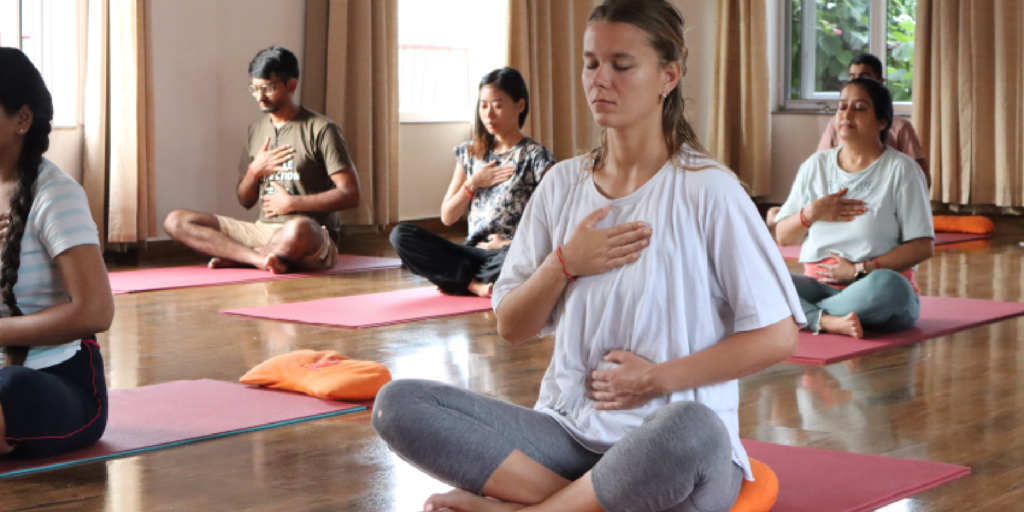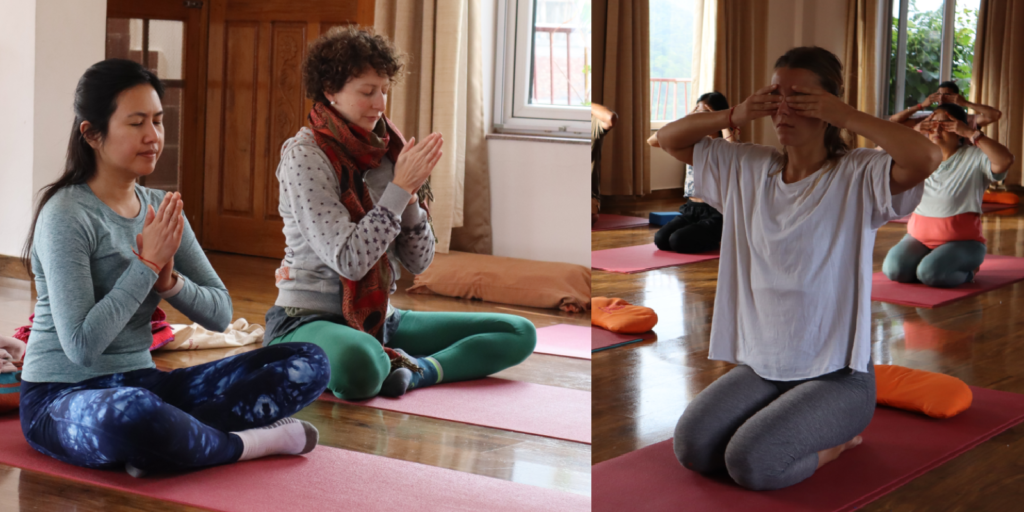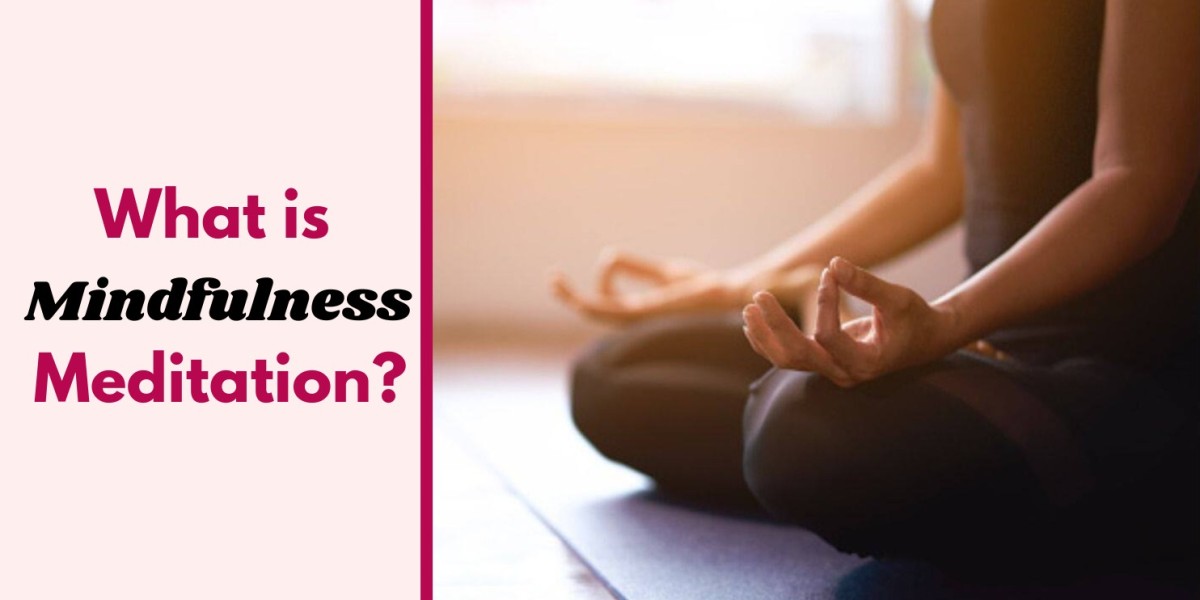Mindfulness meditation is an ancient practice that is becoming increasingly popular in modern society. It is a form of meditation in which you focus on the present moment and become aware of your thoughts, feelings, and physical sensations without judgment or analysis.
The practice has been found to reduce stress and anxiety, increase mental clarity and focus, and help cultivate a greater sense of peace and well-being.
Mindfulness meditation can be practiced in many ways, including mindfulness-based stress reduction (MBSR), breath awareness, body scans, and walking meditation. With regular practice, mindfulness meditation can help you to cultivate greater self-awareness, self-acceptance, and emotional balance.
History of Mindfulness Meditation
Mindfulness meditation has its roots in Buddhism, where it is known as Vipassana or insight meditation. It has been practiced for centuries as a way to cultivate greater self-awareness and insight into the true nature of reality.
In the last few decades, mindfulness meditation has become increasingly popular in the west due to its scientific evidence-based benefits.
It is now being used by medical professionals, psychologists, and researchers to help treat a variety of physical and mental health issues, including anxiety, depression, pain management, addiction, stress management, and more.
Types of Mindfulness Meditation
There are many different types of mindfulness meditation, including:
Body Scan Meditation: Focuses on scanning the body and noticing any sensations.
Loving-Kindness Meditation: Involves sending loving-kindness to yourself or others.
Breath Awareness Meditation: Focuses on the breath as an anchor for staying present and mindful.
Visualization Meditation: Involves visualizing a peaceful scene or image to relax and calm the mind.
Mantra Meditation: Involves repeating a phrase or mantra to help stay focused and grounded in the present moment.
Benifits of Mindfulness Meditation
Mindfulness meditation has various benefits, including:
- Reduced stress and anxiety
- Improved focus and concentration
- Increased self-awareness and insight
- Improved emotional regulation and balance
- Enhanced creativity
- Improved physical health
- Increased sense of peace and well-being.

How to Practice Mindfulness Meditation?
Get Comfortable
Mindfulness meditation is best practiced in a comfortable and relaxed setting. Find a space where you won’t be disturbed and where you can sit comfortably with your back straight. You can sit in a chair with your feet on the floor, or sit cross-legged on the floor or on a cushion. Close your eyes and take a few deep breaths to get relax. Allow yourself to settle into the practice before beginning.
Consider a Timer
It can be helpful to use a timer when meditating to help keep you focused and on track. You can use the timer on your phone or download a meditation app, such as Insight Timer, which offers guided meditations and a timer feature.
Focus On Your Breath
Once you’re settled in, begin to focus your attention on your breath. Notice the sensation of each inhale and exhale without judgment or attachment. If your mind fluctuates, gently bring your attention back to your breath. This practice of non-judgmental awareness is a key aspect of mindfulness meditation, and at a Yoga Retreat in Rishikesh, participants are guided through this process, learning to observe their thoughts and feelings without getting caught up in them, fostering inner calm and self-awareness.
Notice Your Thoughts and Emotions
Allow yourself to become aware of your thoughts and emotions without attaching to them. Notice them without judgment or attachment, simply observe. If you find yourself getting caught up in a thought or emotion, simply return your attention back to your breath.
Give Yourself a break
Meditation is a practice, and it’s ok if your mind wanders or if you don’t feel like you’re “doing it right.” Give yourself some grace and allow yourself to just be in the moment.
Maintain Your Practice
Mindfulness meditation is most effective when practiced regularly. Aim for 5-10 minutes each day and gradually increase the length of time as you become more comfortable with the practice.
Impact of Mindfulness Meditation
Mindfulness meditation has been found to reduce stress and anxiety, improve focus and concentration, and increase overall well-being. Regular practice can help you become more aware of your thoughts and emotions, allowing you to respond more skill fully to life’s challenges.
End with Gratitude
When your timer closed, take a few seconds to reflect on your practice. Notice any shifts or insights that have arisen during your meditation. Offer yourself some gratitude for taking the time to practice self-care and self-awareness.

Steps to Practicing Mindfulness Meditation
- Find a comfortable position to sit in. You can sit in a chair with your feet on the floor, or sit cross-legged on the floor or on a cushion.
- Close your eyes and take some deep breaths to get relax.
- Begin to focus your attention on your breath, noticing the sensation of each inhale and exhale.
- Notice any thoughts or feelings that come up without judgment or attachment, then return your focus back to your breath.
- Continue this practice for 5-10 minutes and when you’re done, take a few more deep breaths before slowly opening your eyes and returning to the present moment.
How to Overcome Common Obstacles of Mindfulness Meditation ?
- Difficulty sitting still: When you find yourself struggling to sit still, try engaging in a gentle body scan or stretching before beginning your meditation. This will help to relax your body and prepare it for the meditation session ahead.
- Difficulty focusing: If you find it difficult to focus on your breath, try counting your breaths or repeating a mantra to help keep your focus. This will provide you with something concrete to focus on, which can help prevent wandering thoughts from distracting you.
- Uncomfortable emotions: It is normal to experience uncomfortable emotions during meditation, such as frustration or boredom. Acknowledge these feelings without judgment and then return your focus back to the breath. Remind yourself that these feelings are only temporary and that they will pass in time.
- Unwanted thoughts: Unwanted thoughts are a normal part of the meditation process. Acknowledge the thought without judgment, then let it go and return your focus back to your breath. Try not to get caught up in the thought or let it distract you from the practice of mindfulness meditation.
- Feeling overwhelmed: If you find yourself feeling overwhelmed or anxious during meditation, take a few deep breaths and remind yourself that this too shall pass. Try not to get caught up in the emotions but instead allow them to come and go without judgment or attachment.
Tips for Enhancing Your Mindfulness Meditation Practice
- Set aside a specific time for your practice: Creating a consistent time for your mindfulness meditation practice can help you stay on track and make it a regular part of your day.
- Find a comfortable position: Sitting in a comfortable position is essential for effective meditation.
- Incorporate guided meditations: Guided meditations can be helpful in deepening your practice, as they provide structure and focus. Listen to guided meditations whenever you need extra support or guidance in your practice.
- Be patient with yourself: Don’t expect to become an expert at mindfulness meditation overnight — it takes time and patience to develop the skills necessary to be successful in this practice. Be gentle with yourself, accept that there will be days when it’s difficult, and don’t get discouraged if progress is slow at first.
- Make use of visual aids: Visualization can be an effective tool for enhancing mindfulness meditation, as it helps direct attention away from distractions and towards the present moment or object of focus (e.g., visualization of a calming scene). Use tools such as candles or incense to help create an atmosphere conducive to relaxation and contemplation during meditation sessions.

Resources for Mindfulness Meditation
Mindfulness meditation is a popular practice known for improving focus and reducing stress. There are many ways to get started, such as using apps or online training. At a Meditation Retreat in Rishikesh, participants can experience guided meditations in a serene setting, offering a more profound and immersive practice. Some TTC schools also provide free guided meditations, making it easier for individuals to integrate mindfulness into their daily lives.
Conclusion
Mindfulness meditation is an ancient practice that has been shown to have numerous health benefits. Regular practice, it can help reduce stress and anxiety, improve focus and concentration, increase self-awareness and insight, enhance creativity, and improve physical health. It is a powerful tool for anyone looking to create a more peaceful and balanced life.



